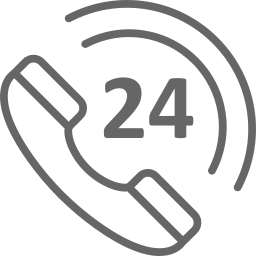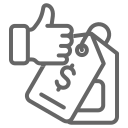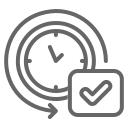Table of Contents
Background.
Roles and Responsibilities.
St. Vincent’s hospital continuity plan.
Disaster Kit
References.
This service delivery model dealing with Drug and Alcohol (D&A) service is the program handed by Opioid Treatment Program (OTP) clients. St. Vincent's Hospital Sydney is the healthcare institution that works closely with NSW health to keep patients, clients, staff, and visitors safe and quality services. The services in the hospital remain open with appropriate safeguards and containment precautions in place. During the Coronavirus outbreak all over the world the cases that are not feeling well have the option to call the hospital staff for urgent requirements.
The Alcohol and Drug Service at St. Vincent’s hospital is still taking new referrals and supporting current clients during COVID-19. The telehealth and phone appointments have been increased by the team during COVID-19 (Haworth & Bruce, 2015).
The services are like Rankin Court Treatment Centre: The service center is operating as usual and if any concerns are to be solved the call is to be arranged on 0283821030.
Stimulant Services (Stimulant Treatment Program, Scheck, Burton Street Centre): The services are operating in the center as usual. Face-to-face appointments and telehealth services in the medical institution are delivered.
The phone calls operating system in the clinic are operated by the organization. The days are fixed as of Monday, Tuesday, Thursday, and Friday from 9 am to 12 pm. Please call 0293618078 (Othman & Beydoun, 2016).
Alcohol and Drug Outpatient Service: Service operating is as usual in the institution. Face-to-face appointments and telehealth services are provided by a call on 0283821218.
Gorman Unit: Referral process via a centralized intake line on 0293618080. The services are operated as usual.
Gambling Treatment Program: The program offers face-to-face and telehealth appointments in the service centers.
The departments such as Alcohol and Drug Information Service (ADIS), Drug and Alcohol Specialist Advisory Service (DASAS), Stimulant Treatment Line (STL), Opioid Treatment Line (OTL), 1300 Driver.
St. Vincent's Alcohol and Drug Service recognizes alcohol and additional drug use as extensive to society and culture in the region of the world. The duty of the Healthcare organization was to endorse welfare and decrease the harm ensuing from the make use of alcohol and other drugs, input a variety of services to hold up persons, family, and community. The services provided by the organization are free of charge, private, and non-judgmental. psychotherapy, set aside association from drugs and alcohol, opioid-assisted therapy, check-up for people who use stimulants, treatment program, in series on drugs and alcohol, grouping programs, senseless and syringe, support for associates, family, or friends, and specialist advice for health professionals. Other services include withdrawal and dependence action, instruction and non-prescription Opioid dependence treatment, refreshment treatment, Burton Street Centre, Specialist outpatient care, hospital consultation-liaison, Alcohol and Drug Information Service ADIS, DASAS, 1300 Driver, Opioid Treatment Line OTL, STL, Cannabis Caution, and State-wide Smoking Cessation Training.
Director
The Drug and Alcohol Service Disaster services would be run by the Director of the hospital. He is the overall manager responsible for managing the events/ incidents of Drug and Alcohol Service (McLennan, Whittaker & Handmer, 2016). The director is referred to as an Incident controller. He is responsible for
Drug and Alcohol Manager
Nursing Unit Manager
Pharmacist
|
Problem |
Impact |
Contingency |
Action/ Tasks |
Responsibility |
|
Power failure |
‘Methadose’ system not available |
Alternative dosing equipment and relevant documents availability Maintenance of the battery backs up to make the all dosages available. |
To make dosages available: · The premises should be made accessible under lock and key. · The medications should be made accessible without the power to retrieve them. · The alternative sources of battery backup must be put into a place, where the staff knows. · The manual pumping system should be kept into a disaster box. · Syringes and gauges should be made available in an adequate manner so that these can be found easily during need. · A hard copy of all the documents should be made available so that these can be accessed at the time of need. |
Nursing Unit Manager. |
|
Local fire, storm, event, floods |
Loss of equipment/ software, loss of hard copy records, loss of premises |
Relocation of pharmacy according to dosing used in the disaster management plan. Access of data through local network connections. Use a manual pump to dispense the dose. |
· Databases should be set up to maintain the record of pharmacy in software. · The database access should be made available on the other PC’s. · The responsible person should be made available to have followed up on the calls. |
· Head of Pharmacy department · D&A manager. |
|
Methadone/ Buprenorphine/ Buprenorphine-Naloxone/ Supply |
No service |
Alternative source |
· Sources of stock should be made available that should be made available and the liaison with § Supplier § Hospital Pharmacy Stock § LAMP clinic § Private pharmacies |
· Head of the pharmacy · Nursing unit head |
Action cards
The items must be set in a way so that they are ready to use them.
Local manager
The copies of items should be kept by administrative staff so that evacuation from an event should be planned in a good manner.
Model of care
The Drug and Alcohol Specialist Advisory Service (DASAS) provides health professionals with telephone services from any part of NSW and the Act, to get funds from the government. The drug-related problems and patients with alcohol and drug-related problems.
Alcohol and Drug Consultation-Liaison for the inpatient services aims at enhancing the safety of patients, clinical outcomes, quality, and efficiency of services provided to patients with substance use disorders.
The framework of this model relates to:
The healthcare model is applied to all the professionals who provided Drug and Alcohol Specialist Advisory Service including addiction specialists, clinical nurse consultants, and contractors.
The model is guided by the consultation on healthcare models that require discussion on the model of care. Here, the members work interchangeably according to the roster. The model of care supports the quality of healthcare according to core values, compassion, justice, excellence, and integrity. The alignment of models complies with the Patient Safety and Quality Strategic Plan for strategy based practice to ensure delivery of appropriate and effective care. The advocacy should be in terms of vulnerability, marginalization, and poor community. The continuous vision should be demonstrated to provide consultation services for inpatients (Alamdar, Kalantari & Rajabifard, 2016).
Elements that would be included in the model of care are:
Service Operation
Hours of Operation
Telephone/ referral system
Inclusion criteria
Staffing
It involves
DASAS Call Management
Clinical role requirement
The clinical nurses, consultants, medicine specialists, administration officers, and counselors in the system must ensure the provision of services timely.
Education
The staff must be skilled enough to provide the services as per the patient's requirements. This includes both the clinical and operation aspect.
Compliance
The system should be made in a way such that they ensure the requirements of law, industry, and organizational standards, codes, and principles (Hung, Kalantari & Rajabifard, 2016).
Alamdar, F., Kalantari, M., & Rajabifard, A. (2016). Towards multi-agency sensor information integration for disaster management. Computers, Environment and Urban Systems, 56, 68-85.
Haworth, B., & Bruce, E. (2015). A review of volunteered geographic information for disaster management. Geography Compass, 9(5), 237-250.
Hung, K. C., Kalantari, M., & Rajabifard, A. (2016). Methods for assessing the credibility of volunteered geographic information in flood response: A case study in Brisbane, Australia. Applied Geography, 68, 37-47.
Inan, D. I., Beydoun, G., & Opper, S. (2016). Towards knowledge sharing in disaster management: An agent oriented knowledge analysis framework. arXiv preprint arXiv:1606.01355.
McLennan, B., Whittaker, J., & Handmer, J. (2016). The changing landscape of disaster volunteering: opportunities, responses and gaps in Australia. Natural Hazards, 84(3), 2031-2048.
Othman, S. H., & Beydoun, G. (2016). A metamodel-based knowledge sharing system for disaster management. Expert Systems with Applications, 63, 49-65.
Rawluk, A., Ford, R. M., Neolaka, F. L., & Williams, K. J. (2017). Public values for integration in natural disaster management and planning: a case study from Victoria, Australia. Journal of environmental management, 185, 11-20.
Remember, at the center of any academic work, lies clarity and evidence. Should you need further assistance, do look up to our Management Assignment Help
Recommended for You
Need Help For Management Study
A Short Guide to Writing Management Assignments

Get 24x7 instant assistance whenever you need.

Get affordable prices for your every assignment.

Assure you to deliver the assignment before the deadline

Get Plagiarism and AI content free Assignment

Get direct communication with experts immediately.
Secure Your Assignments
Just $10
Pay the rest on delivery*

It's Time To Find The Right Expert to Prepare Your Assignment!
Do not let assignment submission deadlines stress you out. Explore our professional assignment writing services with competitive rates today!
Secure Your Assignment!